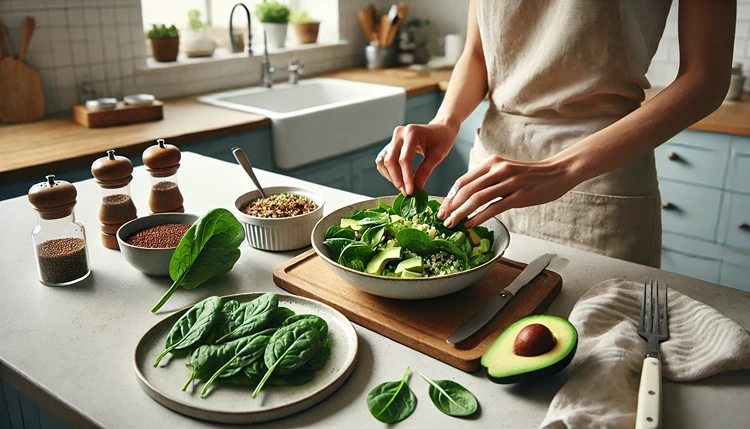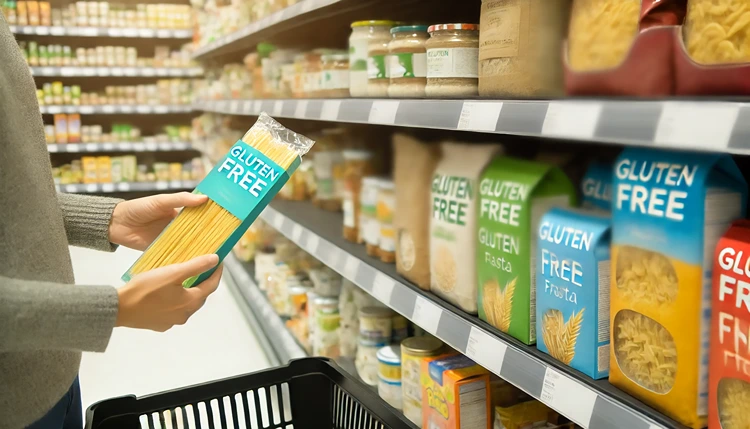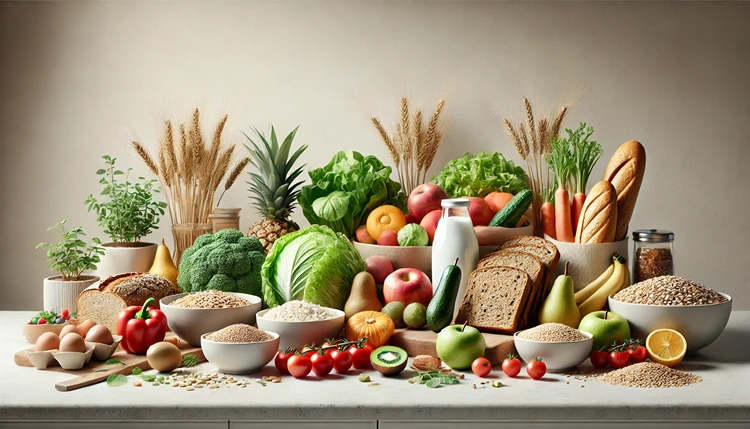Transitioning to a gluten-free diet can feel overwhelming at first, but with the right approach, it doesn’t have to be. Whether you’re going gluten-free for health reasons or by choice, understanding how to navigate this shift can make all the difference. Here, we’ll break down practical, easy-to-follow tips to help you smoothly transition into your new gluten-free lifestyle.
Why Consider Going Gluten-Free?
Before diving into the tips, it’s important to understand why someone might need or want to go gluten-free. For those with celiac disease, even a small amount of gluten can cause damage to the small intestine. Others may have non-celiac gluten sensitivity, which can trigger uncomfortable symptoms like bloating, fatigue, or headaches after eating gluten.
For many, a gluten-free diet offers relief from these symptoms and helps improve overall well-being. But making this change doesn’t mean you’ll have to give up enjoying food—you just need to learn some new tricks to help you along the way.
What Foods Should You Avoid on a Gluten-Free Diet?
The first thing to know is that gluten is a protein found in wheat, barley, and rye. This means that many common foods contain gluten, like bread, pasta, and cereals. But gluten can also hide in processed foods like sauces, dressings, and even in some beverages.
To start, here are some foods you should avoid:
- Wheat-based products like bread, pastries, and pasta
- Barley and foods containing barley (like malt)
- Rye and rye-based products
- Certain sauces and soups (like soy sauce, gravies, etc.)
- Processed foods that may use gluten as a thickener
Helpful Hint:
Always check ingredient labels for gluten-containing ingredients like “wheat,” “barley,” “rye,” or “malt.” Gluten can hide in surprising places, so it’s worth being extra cautious when shopping for groceries.
What Gluten-Free Alternatives Can You Enjoy?

The good news is that there are plenty of gluten-free alternatives available today. From naturally gluten-free grains to specially made gluten-free bread, there’s no shortage of options. Here are some common substitutes:
- Gluten-free flours (like almond, coconut, or rice flour)
- Gluten-free bread and pasta (made from ingredients like quinoa or chickpeas)
- Rice, quinoa, and other gluten-free grains
- Fresh fruits and vegetables
- Lean proteins like chicken, fish, and eggs
Helpful Hint:
Many stores now carry a wide selection of gluten-free products. When trying new alternatives, sample different brands to find the one you like best. Not all gluten-free breads or pastas taste the same, so experimenting is key to finding your favorites!
Common Gluten-Free Substitutes
| Gluten-Containing Food | Gluten-Free Alternative |
|---|---|
| Wheat Flour | Almond Flour, Coconut Flour, Rice Flour |
| Pasta | Gluten-Free Pasta (Rice, Quinoa, or Corn-based) |
| Bread | Gluten-Free Bread (Made from Tapioca, Almond, or Rice Flour) |
| Soy Sauce | Tamari or Coconut Aminos |
| Barley Malt | Molasses or Rice Syrup |
How to Handle Gluten-Free Shopping?

Shopping for gluten-free foods can feel like a challenge at first, but with a little practice, it gets easier. Here are some helpful strategies for gluten-free shopping:
- Shop the perimeter of the store: Fresh fruits, vegetables, meats, and dairy products are naturally gluten-free.
- Check labels: Look for products specifically labeled as gluten-free to ensure they’re safe to eat.
- Research gluten-free brands: Familiarize yourself with brands that cater to gluten-free needs.
- Plan ahead: Make a list of gluten-free staples to keep your kitchen stocked with safe foods.
Can You Eat Out on a Gluten-Free Diet?
Yes, you can! Eating out while avoiding gluten can be tricky, but it’s totally doable with some preparation. Here’s how to make dining out gluten-free easier:
- Research the restaurant’s menu before going
- Ask the waiter about gluten-free options
- Request for your meal to be prepared with care to avoid cross-contamination
Many restaurants now offer gluten-free menus or at least gluten-free options, so don’t be afraid to ask for modifications to suit your dietary needs.
How to Manage Cross-Contamination at Home?
One of the biggest challenges in a gluten-free diet is avoiding cross-contamination, especially if you live with others who aren’t gluten-free. Here’s what you can do:
- Use separate kitchen tools (like toasters, cutting boards, and utensils)
- Keep gluten-free and gluten-containing foods stored separately
- Wipe down surfaces and wash hands frequently when preparing meals
By setting up a gluten-free-friendly kitchen, you’ll minimize the risk of cross-contamination and keep your meals safe.
Helpful Hint:
Consider labeling gluten-free and non-gluten-free kitchen tools to avoid confusion. This simple step can prevent accidental cross-contact when preparing meals.
How to Stay Gluten-Free When Traveling?
Traveling on a gluten-free diet may seem daunting, but it doesn’t have to be! A little planning goes a long way. Here are some tips to help you stick to your gluten-free diet while on the go:
- Pack gluten-free snacks like nuts, seeds, or gluten-free protein bars
- Research gluten-free-friendly restaurants at your destination
- Bring a list of gluten-free phrases in the local language if you’re traveling abroad
By being proactive, you can enjoy your trip without worrying about where to find safe food options.
What Support Can You Find in the Gluten-Free Community?
Transitioning to a gluten-free diet can feel lonely, but there’s a whole community out there ready to support you. From social media groups to gluten-free blogs, connecting with others who share your journey can be incredibly helpful.
Here are some ways to tap into the gluten-free community:
- Join gluten-free social media groups or forums
- Follow gluten-free influencers and bloggers for inspiration and tips
- Attend gluten-free events or expos in your area
By getting involved, you’ll not only find support but also discover new recipes, products, and tips to make your gluten-free journey even smoother.
How to Read Labels for Gluten-Free Products?
One of the most important skills you’ll need when transitioning to a gluten-free diet is learning how to read food labels carefully. Gluten can be hidden in unexpected places, and some products that appear gluten-free might still contain trace amounts of gluten due to cross-contamination during manufacturing.
Here are some key things to look for when checking food labels:
- Look for gluten-free certification: This ensures the product meets strict standards and is safe for gluten-free consumption.
- Check for ingredients like wheat, barley, rye, and malt, which indicate gluten.
- Watch out for vague terms like “natural flavorings” or “modified food starch,” as these can sometimes contain gluten.
- Beware of cross-contamination warnings: If a product was processed in a facility that handles gluten, there might be a risk of contamination.
It’s helpful to get into the habit of reading labels every time you shop. Food manufacturers can change ingredients without notice, so a product you used to buy might not always be gluten-free.
Helpful Hint:
Many companies now label their products as “gluten-free” right on the front of the packaging. However, not all do, so always double-check the ingredient list and allergy information to be sure.
How to Meal Plan on a Gluten-Free Diet?
Meal planning is a great way to stay on track with your gluten-free diet, save time, and ensure that you’re always prepared with safe food options. With a little planning, you can make your meals both delicious and gluten-free.
Here are some simple steps for gluten-free meal planning:
- Plan your meals ahead of time: Sit down once a week and plan out your meals, including breakfast, lunch, dinner, and snacks.
- Create a shopping list: Based on your meal plan, write down everything you need for the week. Stick to your list when shopping to avoid impulse purchases that might not be gluten-free.
- Prep in advance: Chop veggies, cook grains, or even pre-cook full meals if you know you’ll have busy days ahead. This ensures you always have gluten-free food ready to go.
- Batch cooking: Double or triple recipes so you can have leftovers for later in the week or freeze extras for a quick meal later on.
Meal planning not only saves you time but also helps you avoid the temptation of grabbing gluten-containing convenience foods when you’re in a hurry.
What Should You Do If You Accidentally Eat Gluten?
Mistakes happen, and even the most careful people can sometimes end up consuming gluten accidentally. Whether it’s due to cross-contamination, misreading a label, or eating out at a restaurant, here’s how you can manage the situation:
- Listen to your body: Everyone reacts differently to gluten exposure. Symptoms can range from digestive discomfort to fatigue and headaches.
- Stay hydrated: Drinking plenty of water can help flush out your system and alleviate some of the symptoms.
- Rest: Allow your body to recover by getting enough rest. Stressing over the incident won’t help, so take it easy for a day or two.
- Track what happened: Keeping a food diary can help you figure out what triggered the exposure, so you can avoid it in the future.
Don’t be too hard on yourself if you accidentally eat gluten. It’s a learning process, and over time, you’ll become more confident and aware of what foods are safe.
How to Create a Gluten-Free Support System?
Transitioning to a gluten-free lifestyle can be challenging, especially in social situations. Having a strong support system can make all the difference. Surrounding yourself with understanding friends, family, and a community can help you stay motivated and make the transition easier.
Here are some ways to build a gluten-free support system:
- Educate your loved ones: Share your needs with friends and family so they understand the importance of your diet. This way, they can offer support, especially during family meals or social gatherings.
- Join gluten-free communities: Both online and offline, there are numerous gluten-free groups where you can find advice, share experiences, and ask for support when needed.
- Find a dietitian or nutritionist: A professional who specializes in gluten-free diets can help guide you through the process and offer personalized advice for maintaining a balanced diet.
Remember, you’re not alone in this journey. Many people have successfully transitioned to a gluten-free lifestyle and can offer invaluable support along the way.
What Are Some Easy Gluten-Free Snacks and Meal Ideas?
Having a list of go-to gluten-free snacks and easy meal ideas can save you time and help you avoid getting hungry between meals. There are tons of naturally gluten-free snacks you can enjoy, as well as gluten-free versions of your favorite foods.
Here are a few simple ideas to keep in mind:
- Snacks: Fresh fruit, nuts and seeds, rice cakes, gluten-free granola bars, hummus with veggie sticks.
- Breakfast: Smoothies with gluten-free protein powder, scrambled eggs with veggies, gluten-free oats with fruit and honey.
- Lunch: Quinoa salad, gluten-free wraps, grilled chicken and veggies, soups made with gluten-free broth.
- Dinner: Stir-fries with rice or quinoa, gluten-free pasta with marinara sauce, baked salmon with roasted vegetables.
With some creativity, you can still enjoy a variety of flavorful and satisfying meals without gluten.
How to Stay Motivated on a Gluten-Free Diet?
Sticking to a gluten-free diet can be tough at times, especially when you’re craving old favorites or dealing with social pressures. However, staying motivated is key to long-term success.
Here are a few strategies to keep your motivation up:
- Focus on how good you feel: Remind yourself of the health benefits and symptom relief you’ve experienced since going gluten-free.
- Celebrate small wins: Successfully navigating a gluten-free restaurant meal or finding a new gluten-free snack you love are all victories worth celebrating.
- Stay curious: Experiment with new gluten-free recipes and products. Keeping things fresh and exciting in the kitchen can help you avoid feeling restricted.
Pros and Cons of Transitioning to a Gluten-Free Diet
Pros
- Improved digestion for those with gluten sensitivities or celiac disease.
- Potential reduction in bloating and digestive discomfort.
- Increased energy levels for many people once gluten is eliminated.
- A variety of naturally gluten-free whole foods like fruits, vegetables, and lean proteins are part of the diet.
- Growing availability of gluten-free products in grocery stores and restaurants.
Cons
- Gluten-free products can sometimes be more expensive than their gluten-containing counterparts.
- Limited choices when eating out or attending social events.
- Risk of nutrient deficiencies if gluten-free processed foods are heavily relied upon.
- Learning to avoid cross-contamination can be challenging.
- Some gluten-free alternatives may lack the taste or texture of traditional gluten-based foods.
Frequently Asked Questions
Wrapping Up
Transitioning to a gluten-free diet can seem challenging at first, but with the right information and mindset, it becomes easier over time. By understanding what foods to avoid, how to read labels, and how to prevent cross-contamination, you can set yourself up for success. Planning your meals, building a support system, and finding alternatives that work for you are essential steps to making gluten-free living feel natural. Whether you’re switching for medical reasons or simply seeking a lifestyle change, the key is to stay informed and motivated. With the tips provided in this article, you’re well on your way to a smooth and healthy transition into gluten-free eating.

